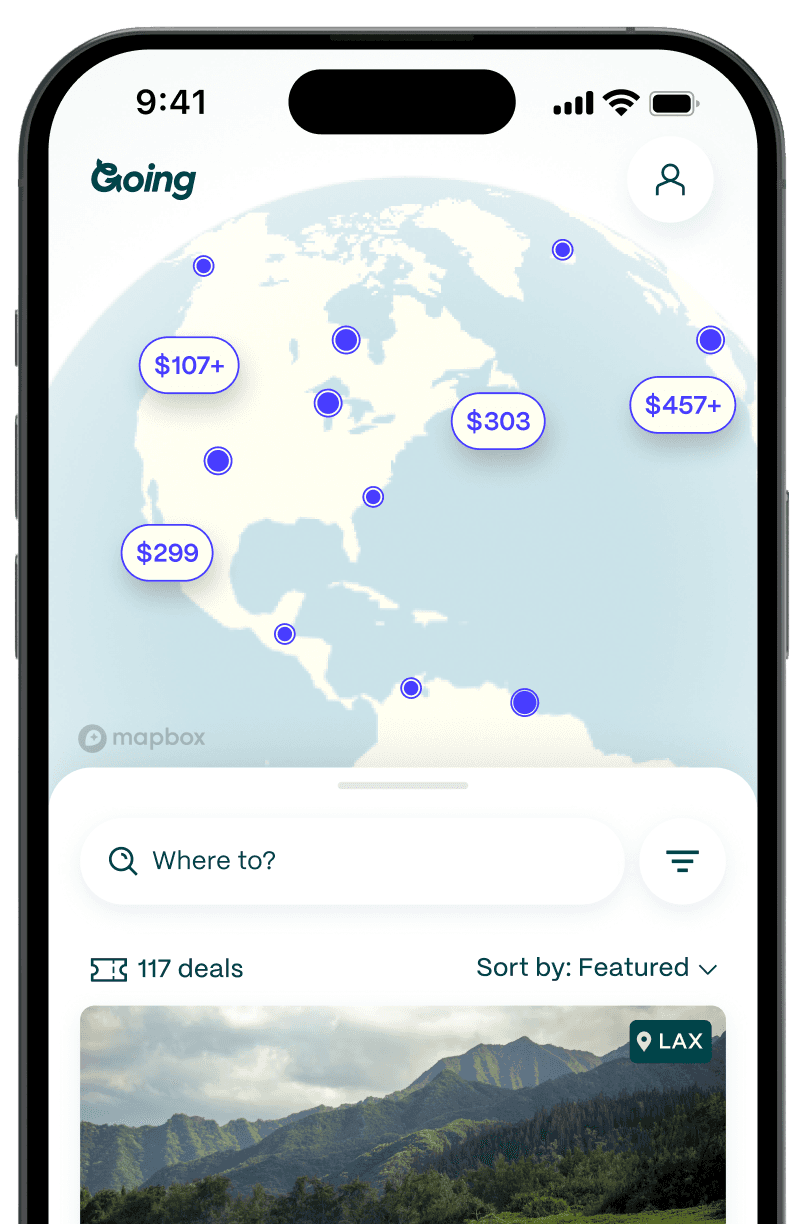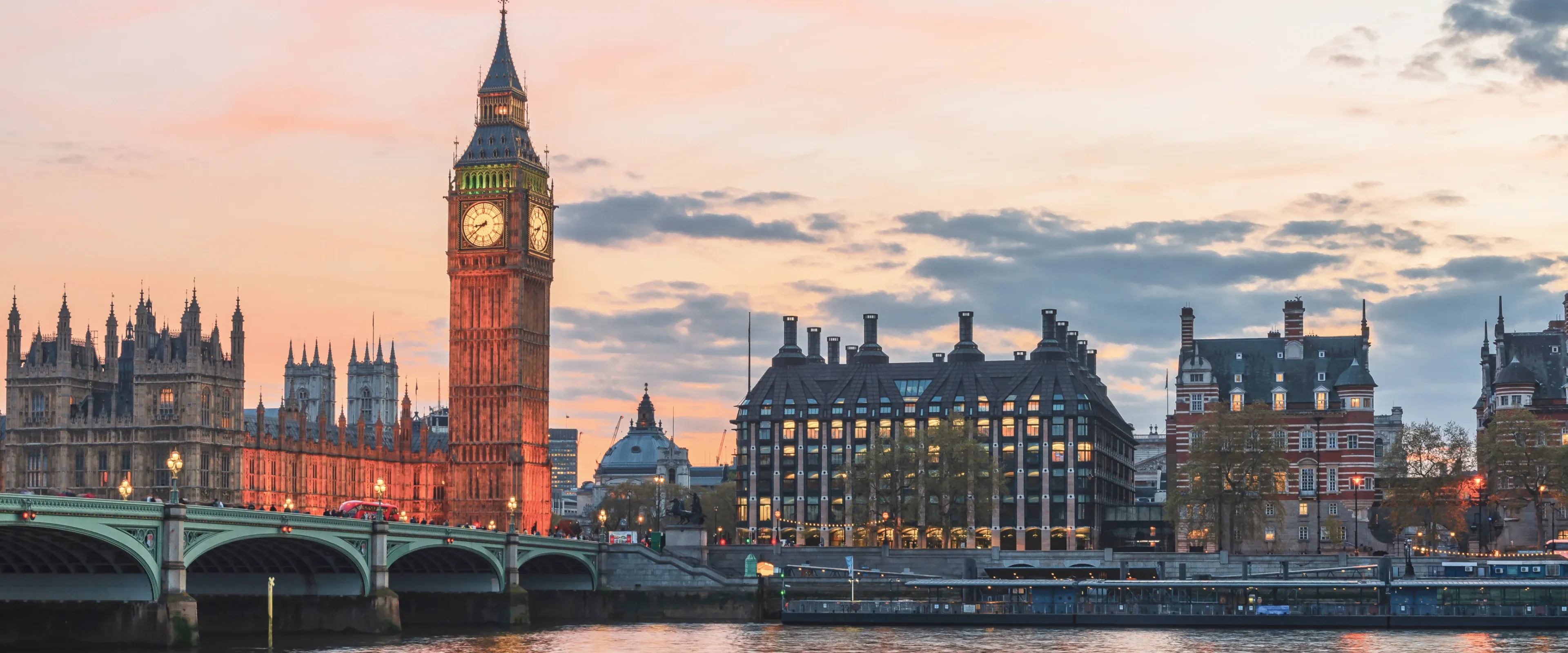
Things To Do In London: Classic & Hidden Spots For a Complete Trip
Table of Contents
London offers world-renowned landmarks like the Tower of London, Buckingham Palace, and the London Eye, free museums (British Museum, National Gallery, Tate Modern), vibrant markets (Borough, Camden), historic sites (Westminster Abbey, Shakespeare's Globe), beautiful parks (Hyde Park, Richmond Park), and unique experiences like West End shows and Thames River cruises.
Whether you're planning your first visit or returning to discover unique things to do in London, this guide covers the top things to do in London—from classic sights to cool things to do in London that locals love.

Key takeaways
Landmarks and views
- Tower of London: See the Crown Jewels and hear Beefeater stories
- Buckingham Palace: Watch the Changing of the Guard
- London Eye: Panoramic city views from the giant observation wheel
- Tower Bridge: Walk across or visit the exhibition
Museums (many of which are free)
- British Museum: World history and artifacts, like the Rosetta Stone
- Tate Modern: Contemporary art in a former power station
- Natural History Museum: Dinosaurs and natural wonders
Markets and food
- Borough Market: Famous food market on the South Bank
- Camden Market: Eclectic goods, street food, and crafts
Parks and outdoors
- Hyde Park: Large central park, Winter Wonderland in winter
- Primrose Hill: Great views over the city
Entertainment and culture
- West End shows: World-class theater
- Thames River Cruise: See landmarks from the water
- Warner Bros. Studio Tour: A must for Harry Potter fans
Recent Going deals to London
- Orlando to London for $335 roundtrip
- NYC to London for $341 roundtrip
- Los Angeles to London for $386 roundtrip
- Chicago to London for $424 roundtrip
Discover London's landmarks
Immerse yourself in history at the Tower of London

The Tower of London is one of the world's most famous fortresses, housing the dazzling Crown Jewels—over 23,000 gemstones including the legendary Cullinan diamond. Don't miss the free Yeoman Warder tours led by the Beefeaters. And look out for the famous ravens: Legend has it that if they ever leave, the kingdom will fall.
- Cost: £34.80 adults, £17.40 children
- Opening hours: Daily 9am–5:30pm (summer) / 9am–4:30pm (winter)
- Ideal for: Families, couples, history buffs
- Area: Tower Hill, East London (E)
- Main attractions: Crown Jewels, White Tower, Yeoman Warder tours, ravens
Witness the grandeur of Buckingham Palace and the Changing of the Guard
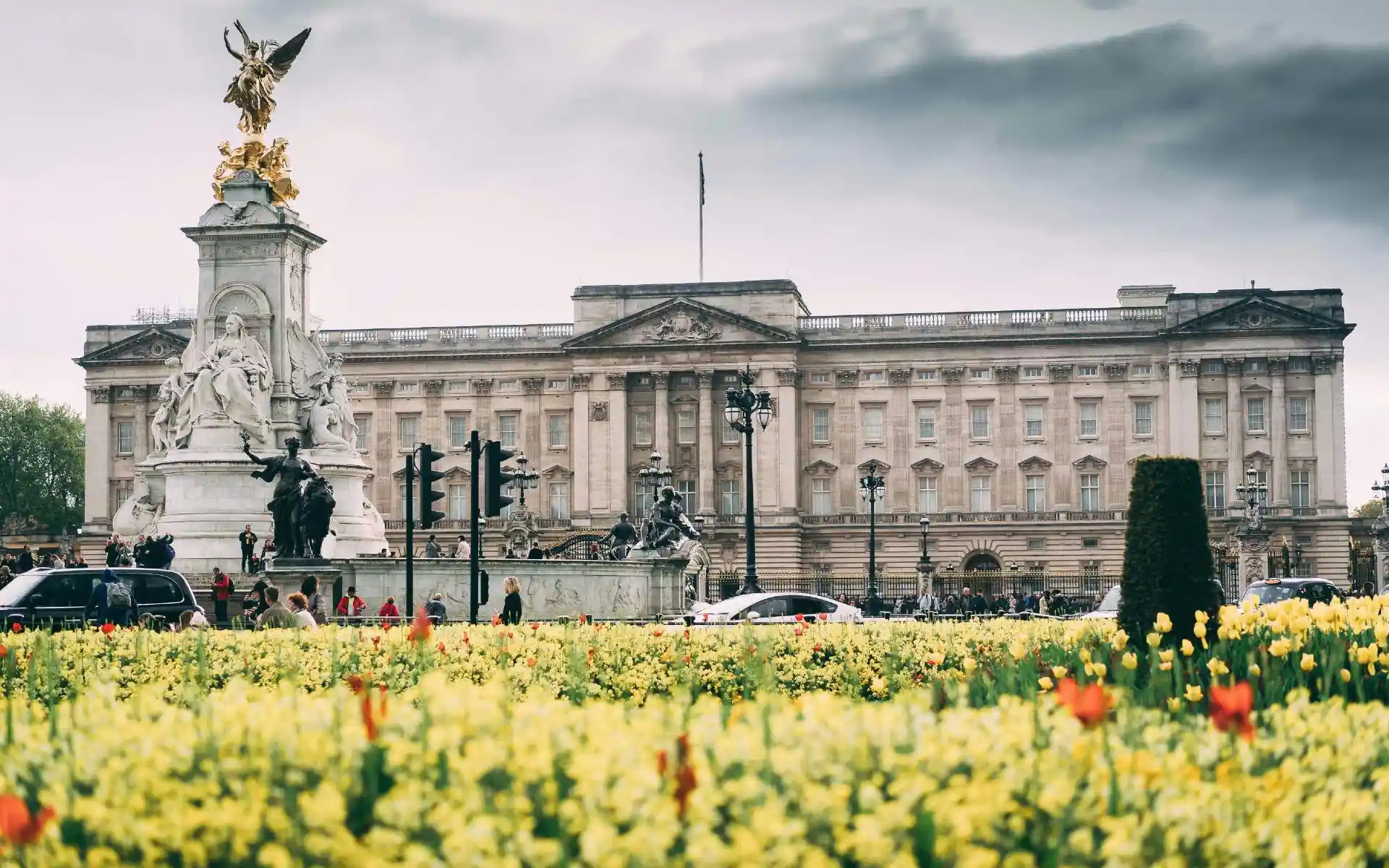
Buckingham Palace sits at the intersection of three great London parks: Hyde, St James’s, and Green parks. This is the official residence of King Charles III, and believe it or not, it’s still possible to go inside the residence on select dates, including ten weeks in the summer. Even if it’s closed for visitors, it’s worth swinging by. The massive fountain featuring Queen Victoria in the courtyard is a great place to have a rest.
- Cost: State Rooms £30; Royal Mews £15; Queen's Gallery £18
- Opening hours: State Rooms open select summer dates; Changing of the Guard at 11am
- Ideal for: Couples, families, first-time visitors
- Area: Westminster, Central London (W)
- Main attractions: State Rooms, Changing of the Guard, Royal Mews
Marvel at the Houses of Parliament and Big Ben
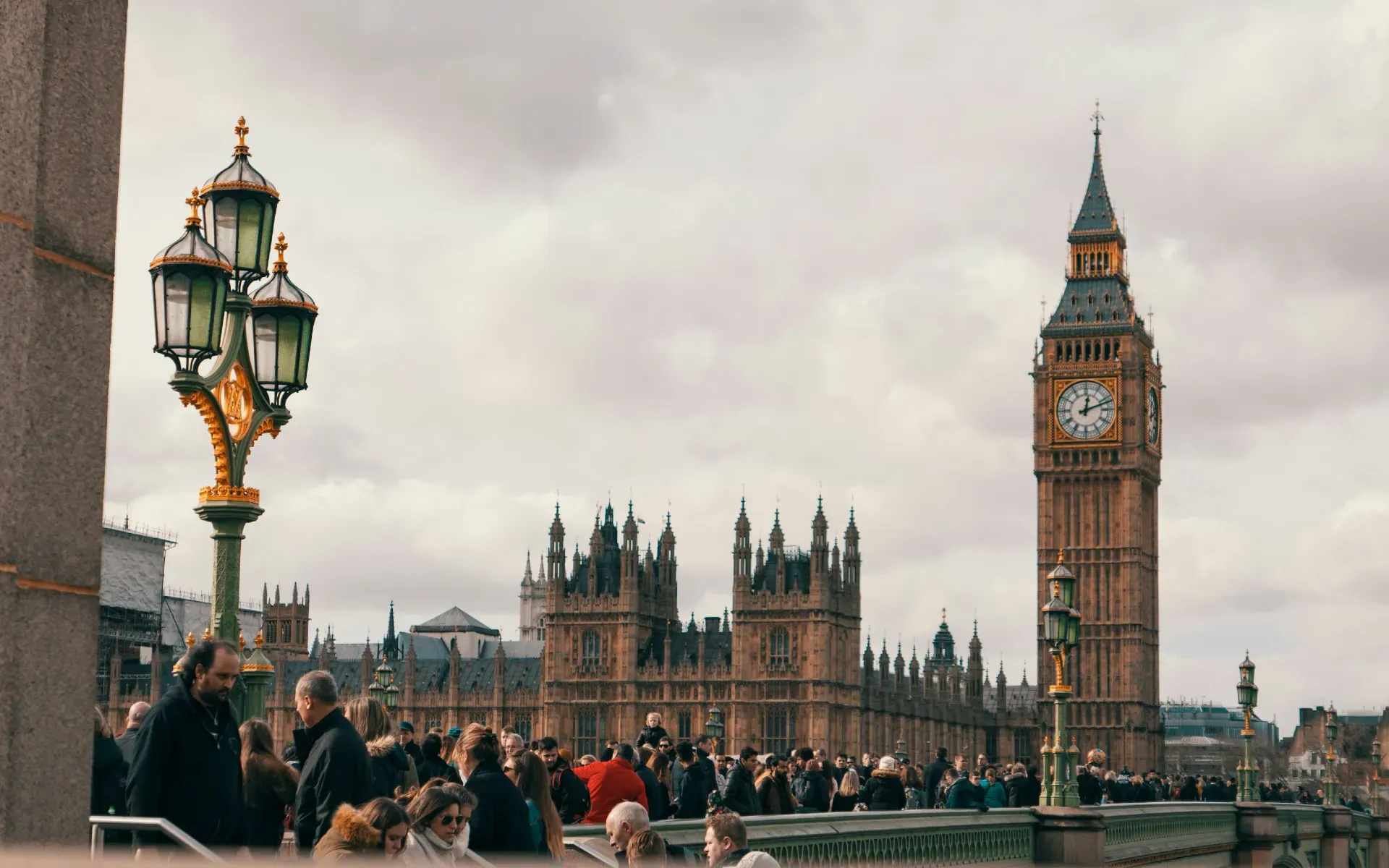
The Houses of Parliament and Big Ben have been iconic symbols of London for centuries. The Elizabeth Tower is now open for tours where you can climb 334 steps to stand next to the famous bell as it strikes the hour.
- Cost: Big Ben tour £35 adults, £20 children (11–17)
- Opening hours: Tours Monday–Saturday (varies by parliamentary schedule)
- Ideal for: History enthusiasts, architecture lovers
- Area: Westminster, Central London (SW)
- Main attractions: Big Ben, Westminster Hall, House of Commons
Explore the treasures of the British Museum
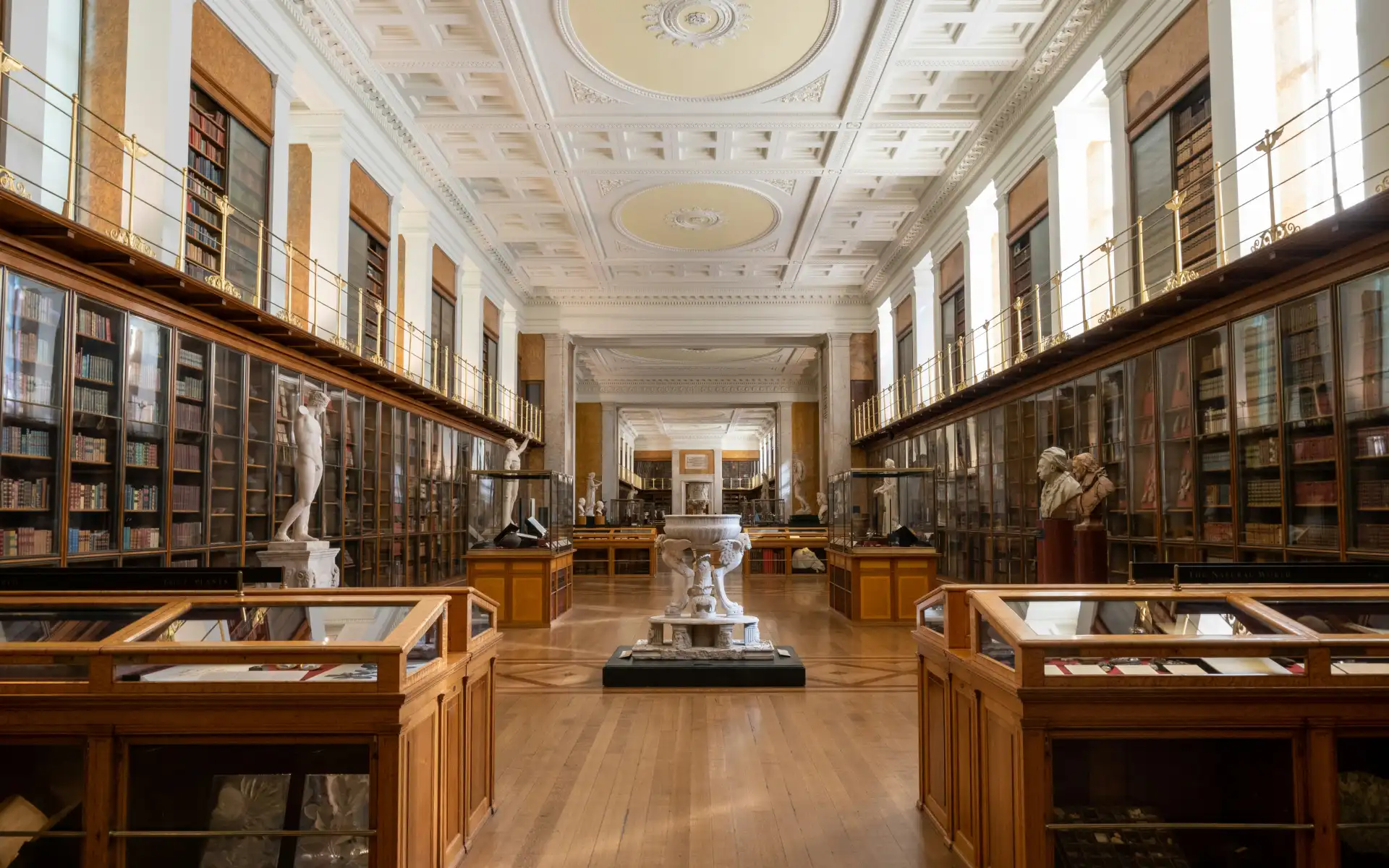
The British Museum houses over 8 million objects spanning 2 million years of human history—and general admission is free. Plan at least half a day, and visit Friday evenings when the museum stays open until 8:30pm.
- Cost: Free (special exhibitions from £18)
- Opening hours: Daily 10am–5pm; Fridays until 8:30pm
- Ideal for: Everyone—families, solo travelers, couples
- Area: Bloomsbury, Central London (WC)
- Main attractions: Rosetta Stone, Egyptian mummies, Parthenon sculptures
See the Prime Meridian at Greenwich
The Prime Meridian divides east from west, and that line is in Greenwich, in East London. The line is marked at the Greenwich Observatory, where you can take the customary photo with a foot in each hemisphere and look out for the green laser beam that marks the meridian line in the evening, cutting through Greenwich Park. To learn about the race to find the meridian (and why it mattered so much), head into the Royal Observatory, which also has planetarium shows.
- Cost: £18 adults; planetarium shows cost extra
- Opening hours: Daily 10am–5pm
- Ideal for: Families, science enthusiasts
- Area: Greenwich, Southeast London (SE)
- Main attractions: Prime Meridian line, Royal Observatory, Planetarium
Be amazed by Tower Bridge
It’s considered good luck to witness the opening of Tower Bridge because it doesn’t happen that often. It’s true: It’s easy to miss, but it does happen almost every day, and you can catch it if you know where to look. (Spoiler: It’s posted on the website.) You get the best view if you walk up onto the bridge and watch as the mid-section rises in front of you. (Tower Bridge is often mistaken for London Bridge. Tower Bridge is the fancy one with two levels. London Bridge is the next one over, and it’s very plain.)
- Cost: Free to cross; exhibition £12.30
- Opening hours: Exhibition daily 10am–5:30pm
- Ideal for: Everyone—especially photographers
- Area: Tower Hill, East London (E)
- Main attractions: Bridge lift viewing, glass walkway, Victorian engine rooms
Experience London's vibrant cultural scene
Catch a show in the West End Theatre District
London's West End rivals Broadway with long-running musicals like The Phantom of the Opera and Hamilton. For deals, try the TKTS booth in Leicester Square for same-day discounted tickets.
- Cost: From £20 for discount tickets to £200+ for premium seats
- Opening hours: Matinees usually 2:30pm; evening shows 7:30pm
- Ideal for: Couples, friends, families
- Area: West End / Covent Garden, Central London (WC)
- Main attractions: Phantom of the Opera, Hamilton, The Lion King
Discover the street art in Shoreditch
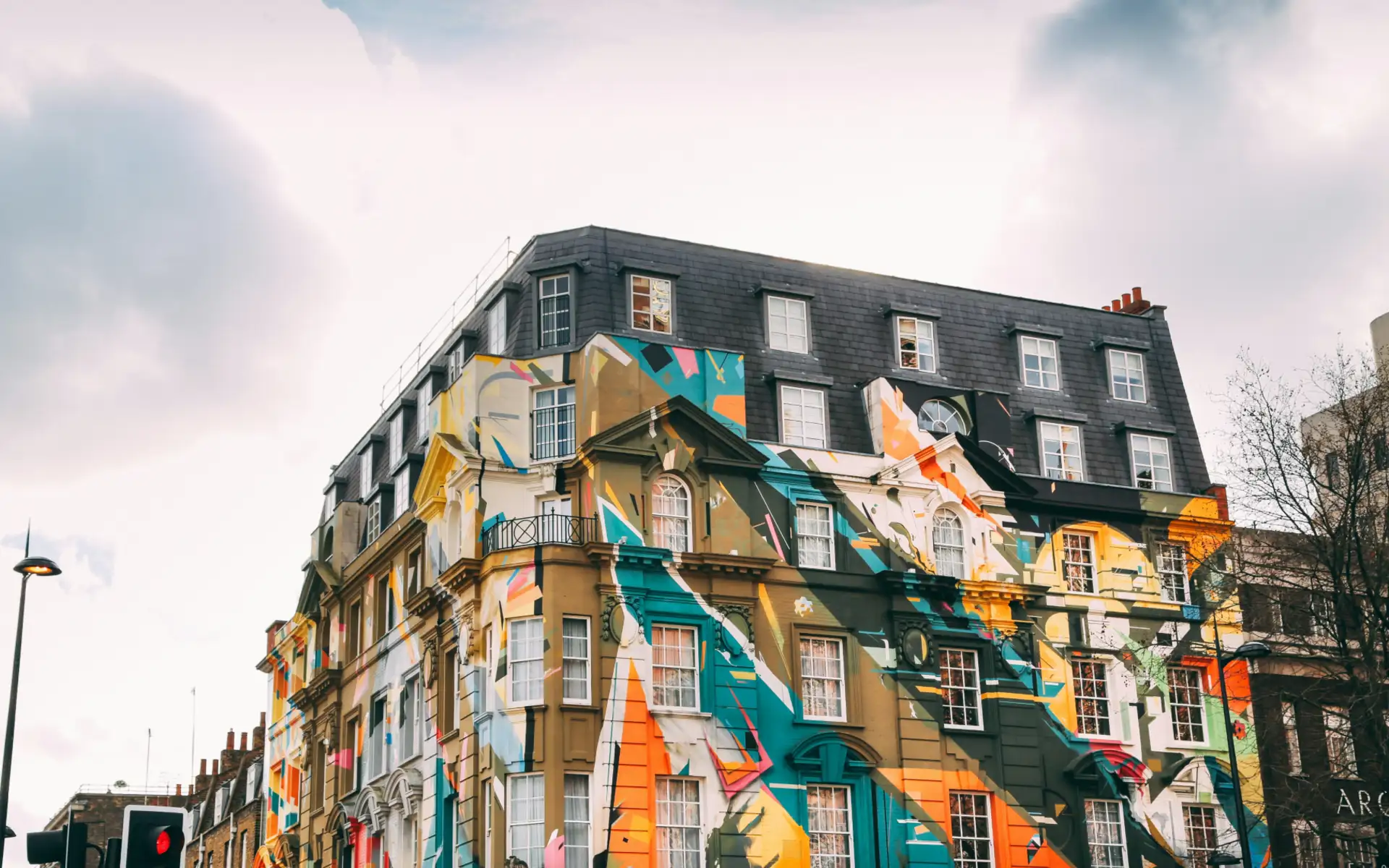
Shoreditch is London's creative heart where every wall becomes a canvas for world-renowned street artists including Banksy. Beyond the murals, find independent boutiques, vintage shops, and excellent coffee.
- Cost: Free to explore; guided tours from £15
- Opening hours: All day (best in daylight)
- Ideal for: Friends, solo travelers, art enthusiasts
- Area: Shoreditch / Brick Lane, East London (E)
- Main attractions: Brick Lane, Rivington Street
Enjoy a pint and a meal at a traditional British pub

No visit to London is complete without experiencing a proper British pub—community institutions with centuries of history, oak-paneled interiors, and hearty food.
- Cost: Pints from £5–8; pub meals from £12–18
- Opening hours: Typically 11am–11pm (kitchens can close earlier)
- Ideal for: Friends, couples, solo travelers
- Area: Citywide
- Main attractions: The Lamb and Flag, Ye Olde Cheshire Cheese
Marvel at the Tate Modern gallery
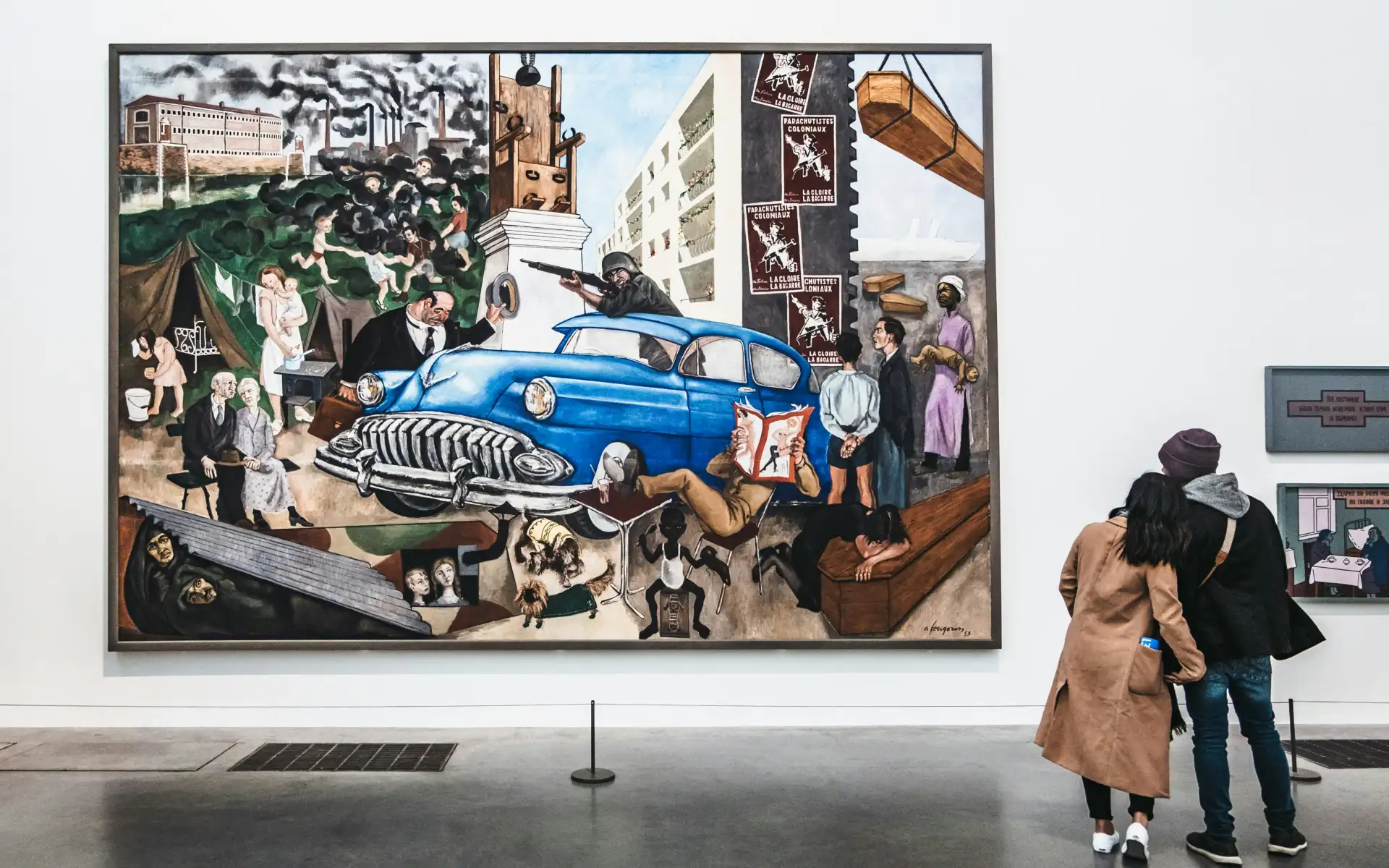
The Tate Modern is spectacular, and that’s before we even touch on the art. This gallery is located in an old power station on the South Bank, and the old turbine hall is still used to host large-scale artworks that would fit nowhere else—with no entry fee. Once inside, you’ll find a world-class art museum displaying works created from the early 1900s to present day. It also happens to host some of the best art exhibitions, not just in London, but around the world.
There are two Tate galleries. Tate Modern, which is on the South Bank, has British and global contemporary art (highlights include Picasso, Mondrian, Warhol, Magritte, and Rothko’s Seagram murals). There’s also Tate Britain in Pimlico, which is home to British art from 1500–present day.
- Cost: Free (special exhibitions from £15–22) (Tate Pimlico may vary)
- Opening hours: Daily 10am–6pm; Fridays until 10pm (Tate Pimlico may vary)
- Ideal for: Art lovers, couples, friends
- Area (Tate Modern): South Bank, Central London (SE)
- Main attractions (Tate Modern): Turbine Hall, Rothko Room, rooftop views
Take a stroll around Camden Market
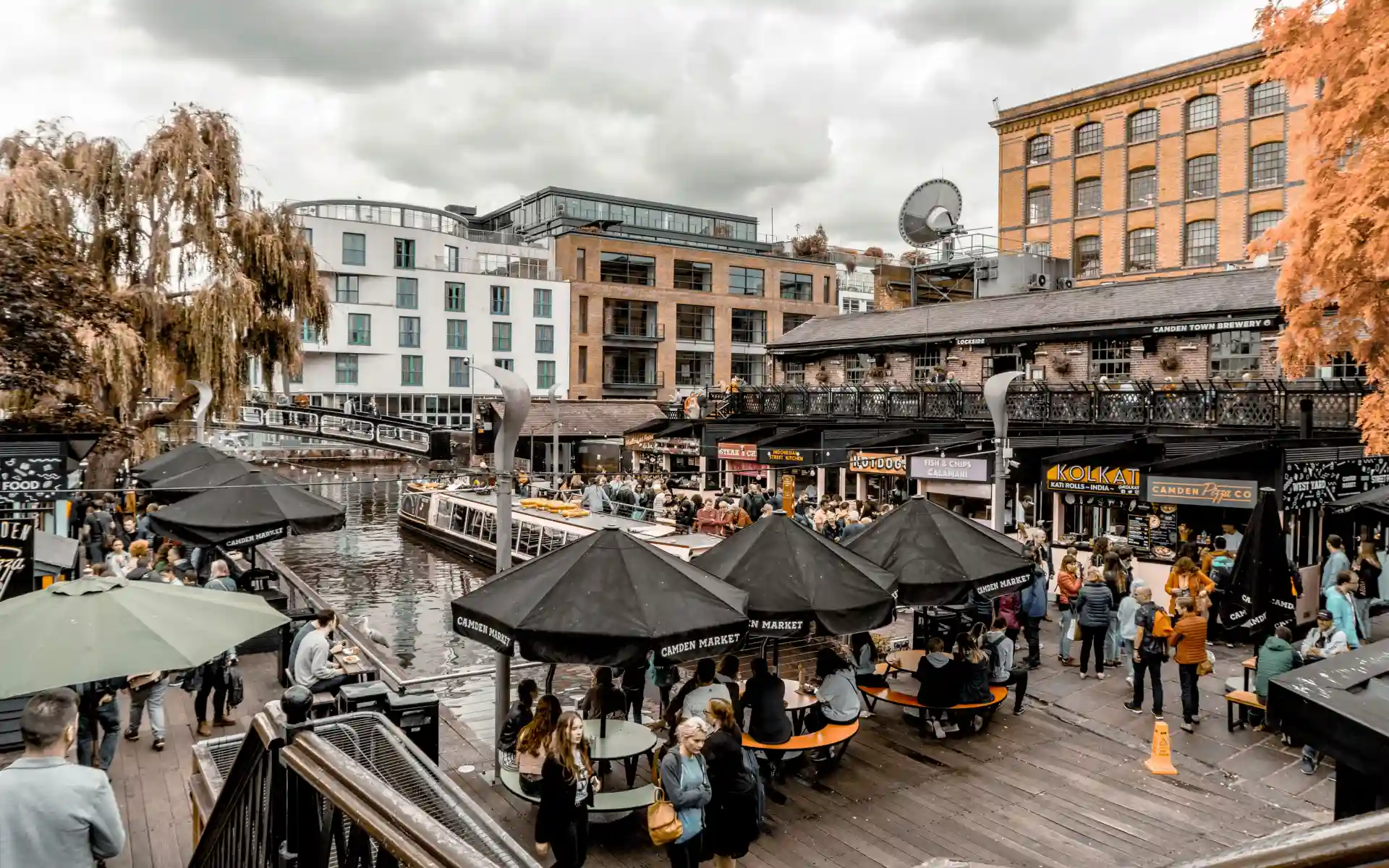
Camden Market is legendary. This is the place for cool vintage, independent fashion, handmade jewelry, and things you didn’t even know would tickle your fancy until they do. A visit to Camden Market can easily be a full day. With 206 stalls the place is huge, and there are plenty of food options too. But there’s a lot to do in addition to shopping: Camden itself is a thriving London neighborhood with pubs, restaurants, and a cool music scene.
- Cost: Free to browse
- Opening hours: Daily 10am–6pm
- Ideal for: Friends, solo travelers, couples
- Area: Camden, North London (NW)
- Main attractions: Camden Lock Market, Stables Market, street food
Relax in London's scenic parks and gardens
Stroll through the expansive Hyde Park and Kensington Gardens

These parks form 625 acres of lawns, lakes, and gardens. Row a boat on the Serpentine, or visit the Diana Memorial Fountain. In winter, Hyde Park transforms into Winter Wonderland.
- Opening hours: 5am–midnight daily
- Ideal for: Families, couples, joggers
- Area: Kensington / Westminster (W)
- Main attractions: Serpentine Lake, Diana Memorial Fountain
Take in the breathtaking views from Primrose Hill
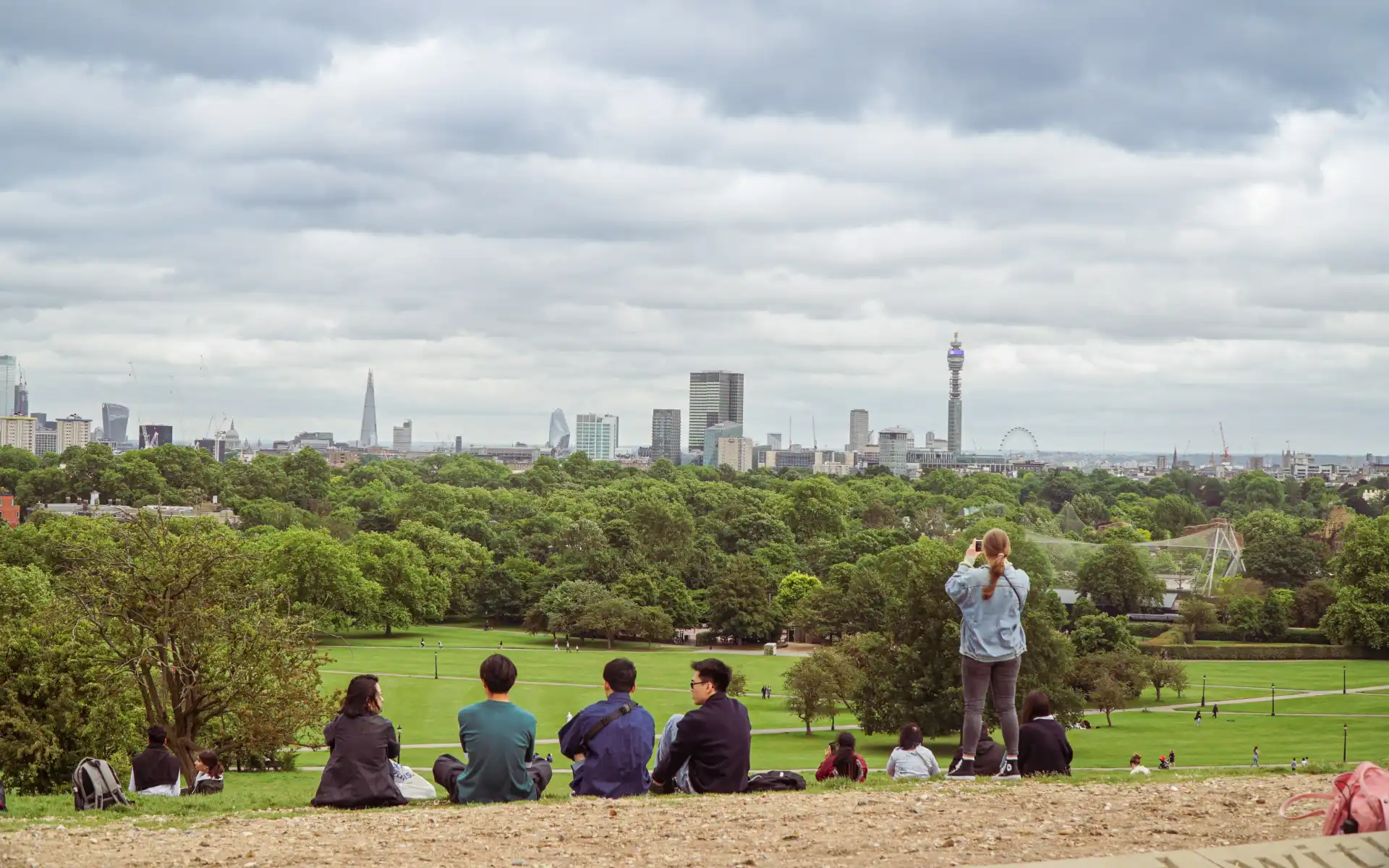
Climb to the top for a panoramic vista from the Shard to the London Eye—particularly magical at sunset or on New Year's Eve.
- Opening hours: All day
- Ideal for: Couples, photographers
- Area: Primrose Hill, North London (NW)
- Main attractions: City views, Regent's Park nearby
Enjoy a picnic in the charming St. James's Park
London's oldest Royal Park offers a peaceful retreat just steps from Buckingham Palace. The lake is home to pelicans (fed daily at 2:30pm), and the views toward the palace from the Blue Bridge are postcard-perfect.
- Opening hours: 5am–midnight daily
- Ideal for: Couples, families
- Area: Westminster, Central London (SW)
- Main attractions: Pelican feeding, Buckingham Palace views
Explore the beautiful Kew Gardens

The Royal Botanic Gardens at Kew is a UNESCO World Heritage site spanning 326 acres. Explore the Victorian Palm House and Treetop Walkway. The Christmas light trail is magical in winter.
- Cost: £15–21 depending on season
- Opening hours: Daily from 10am; closing varies
- Ideal for: Families, couples, nature lovers
- Area: Kew, Southwest London (TW)
- Main attractions: Palm House, Treetop Walkway
Indulge in unique London experiences
Shop and dine at Borough Market
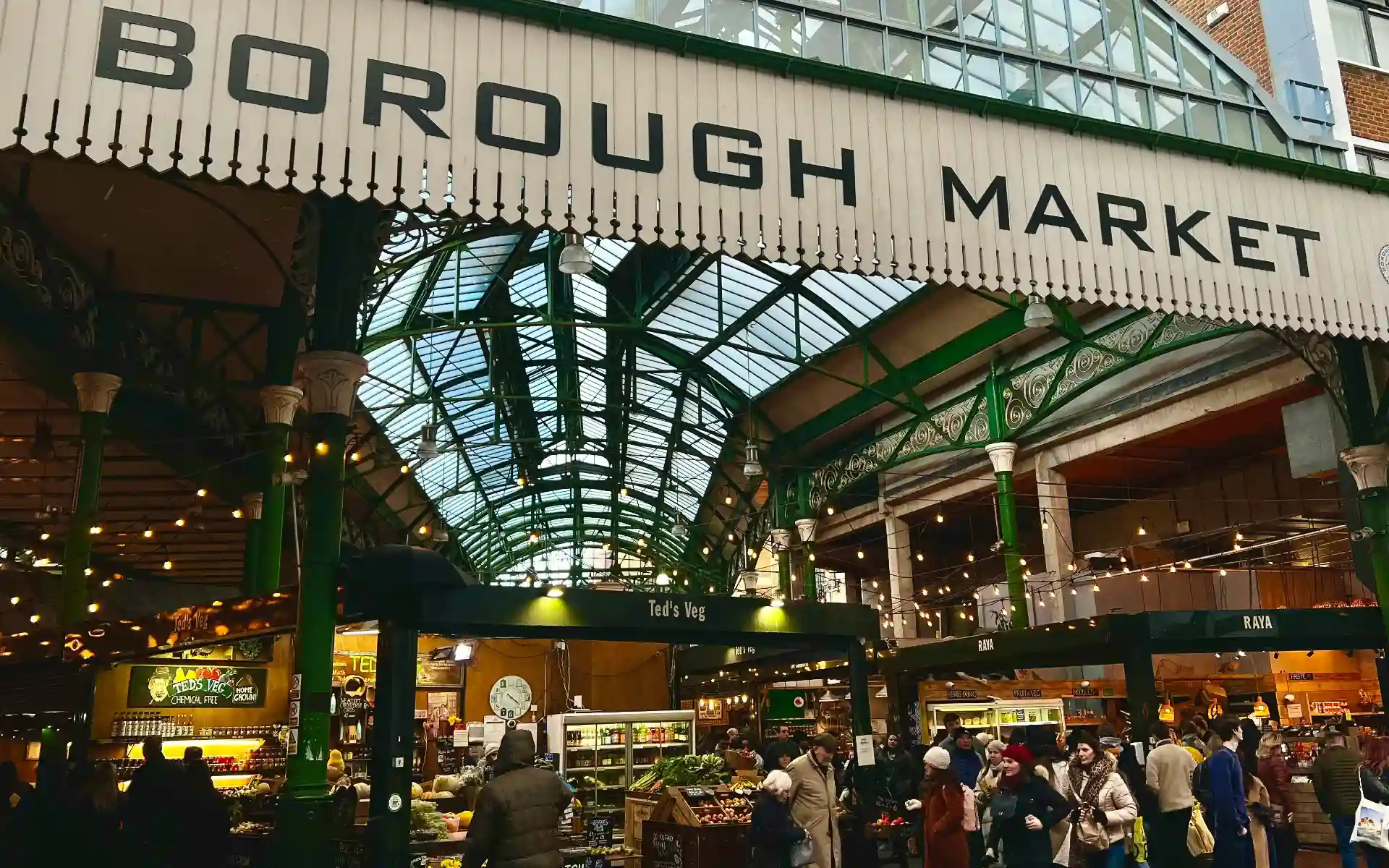
London's most famous food market offers artisan cheeses, freshly baked bread, charcuterie, and street food from around the world under Victorian railway arches.
- Cost: Free to browse; food from £5–15
- Opening hours: Everyday (hours vary during winter and public holidays)
- Ideal for: Foodies, couples, friends
- Area: London Bridge, South London (SE)
- Main attractions: Artisan food stalls, Neal's Yard Dairy
Soar above the city on the London Eye
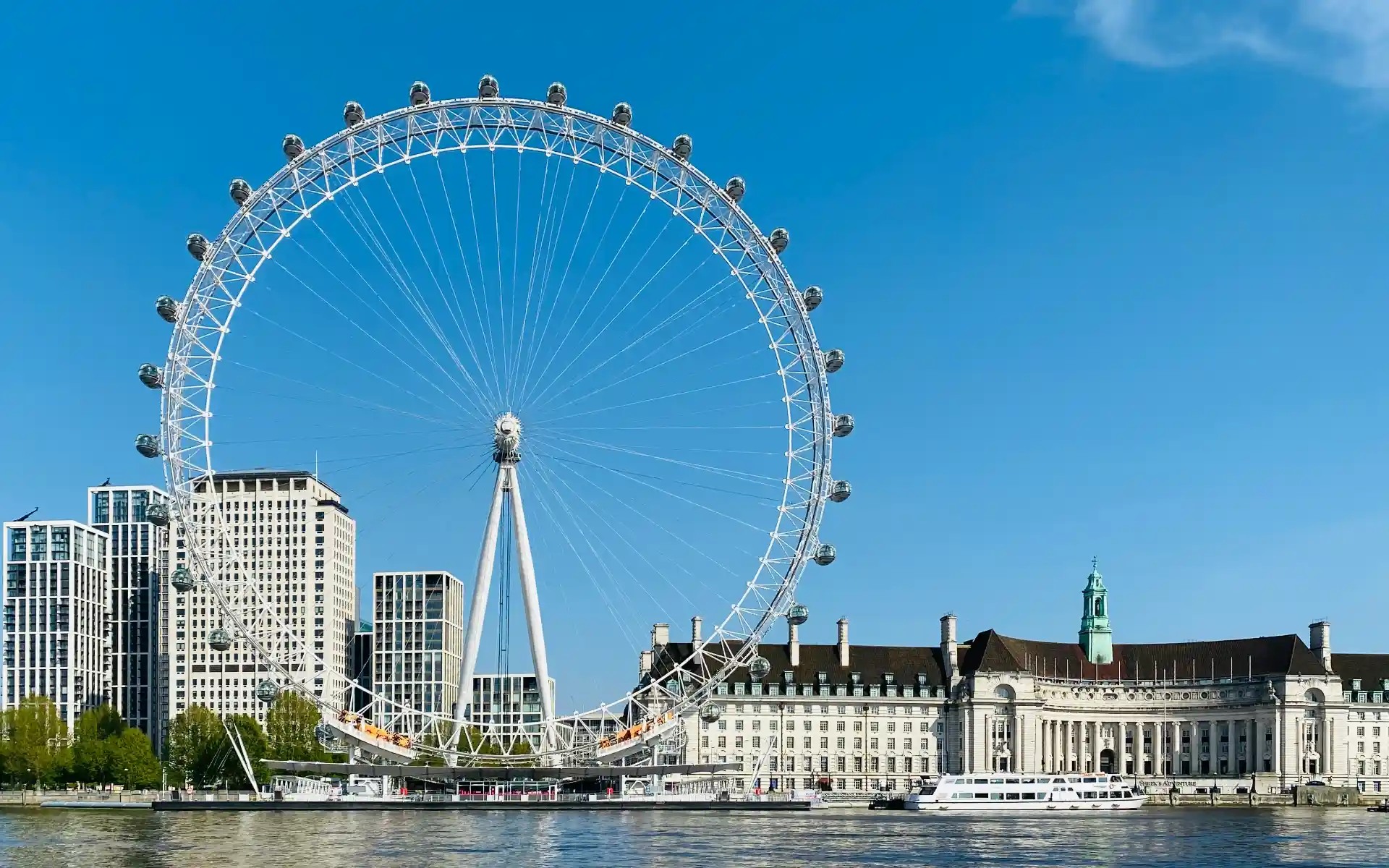
The London Eye offers 360-degree views from 443 feet up. On clear days, you can see as far as Windsor Castle. Book online to save money.
- Cost: From £29 online (£39 on the day)
- Opening hours: Daily 11am–6pm (extended in summer)
- Ideal for: First-time visitors, couples, families
- Area: South Bank, Central London (SE)
- Main attractions: 360-degree views, Big Ben vista
Take a guided tour of the Harry Potter filming locations
The Warner Bros. Studio Tour lets you walk through actual sets—the Great Hall, Diagon Alley, the Forbidden Forest. This is one of the top Harry Potter things to do in London. Tickets sell out weeks in advance, so plan ahead.
- Cost: From £56 adults; packages with transport from £100+
- Opening hours: Varies; typically 9am–10pm
- Ideal for: Harry Potter fans, families
- Area: Leavesden (Watford)
- Main attractions: Great Hall, Hogwarts Express, Diagon Alley, butterbeer
The best things to do in London with kids
Visit the Natural History Museum and Science Museum
This is among the best free things to do in London with kids. The Natural History Museum's dinosaurs and the Science Museum's interactive exhibits are perennial favorites.
- Cost: Free (special exhibitions from £10–15)
- Opening hours: Daily 10am–5:50pm
- Ideal for: Families with children of all ages
- Area: South Kensington, West London (SW)
- Main attractions: Dippy the Dinosaur, Blue whale, Wonderlab
Have fun at London's best playgrounds and parks
The Diana Memorial Playground in Kensington Gardens has a massive wooden pirate ship. Queen Elizabeth Olympic Park offers modern climbing structures and water play.
- Cost: Free
- Opening hours: Daylight hours
- Ideal for: Families with young children
- Area: Various locations
- Main attractions: Diana Memorial Playground, Queen Elizabeth Olympic Park
Meet sea creatures at SEA LIFE London Aquarium
It features over 500 species including sharks, rays, and penguins near the London Eye. Combo tickets with the Eye offer great value.
- Cost: From £26 online
- Opening hours: Daily 10am–6pm
- Ideal for: Families
- Area: South Bank, Central London (SE)
- Main attractions: Shark walk, Ocean Tunnel, Penguin Point
Embark on exciting day trips from London
Step into royal history at Windsor Castle

The oldest and largest occupied castle in the world, just 45 minutes by train. Explore the State Apartments and St George's Chapel, where Prince Harry and Meghan Markle got married.
- Cost: £30 adults, £17 children
- Opening hours: 10am–5:15pm (summer); 10am–4:15pm (winter)
- Ideal for: History enthusiasts, families
- Area: Windsor, Berkshire (about 25 miles west)
- Main attractions: State Apartments, St George's Chapel
Explore the charming city of Bath

A UNESCO World Heritage site 90 minutes by train. Marvel at the Roman Baths and Georgian architecture, then soak at Thermae Bath Spa.
- Cost: Roman Baths £25–30; Thermae Bath Spa from £42
- Opening hours: Roman Baths daily 9am–6pm
- Ideal for: Couples, history lovers
- Area: Bath, Somerset (about 112 miles west)
- Main attractions: Roman Baths, Royal Crescent
Immerse yourself in academia at Oxford or Cambridge
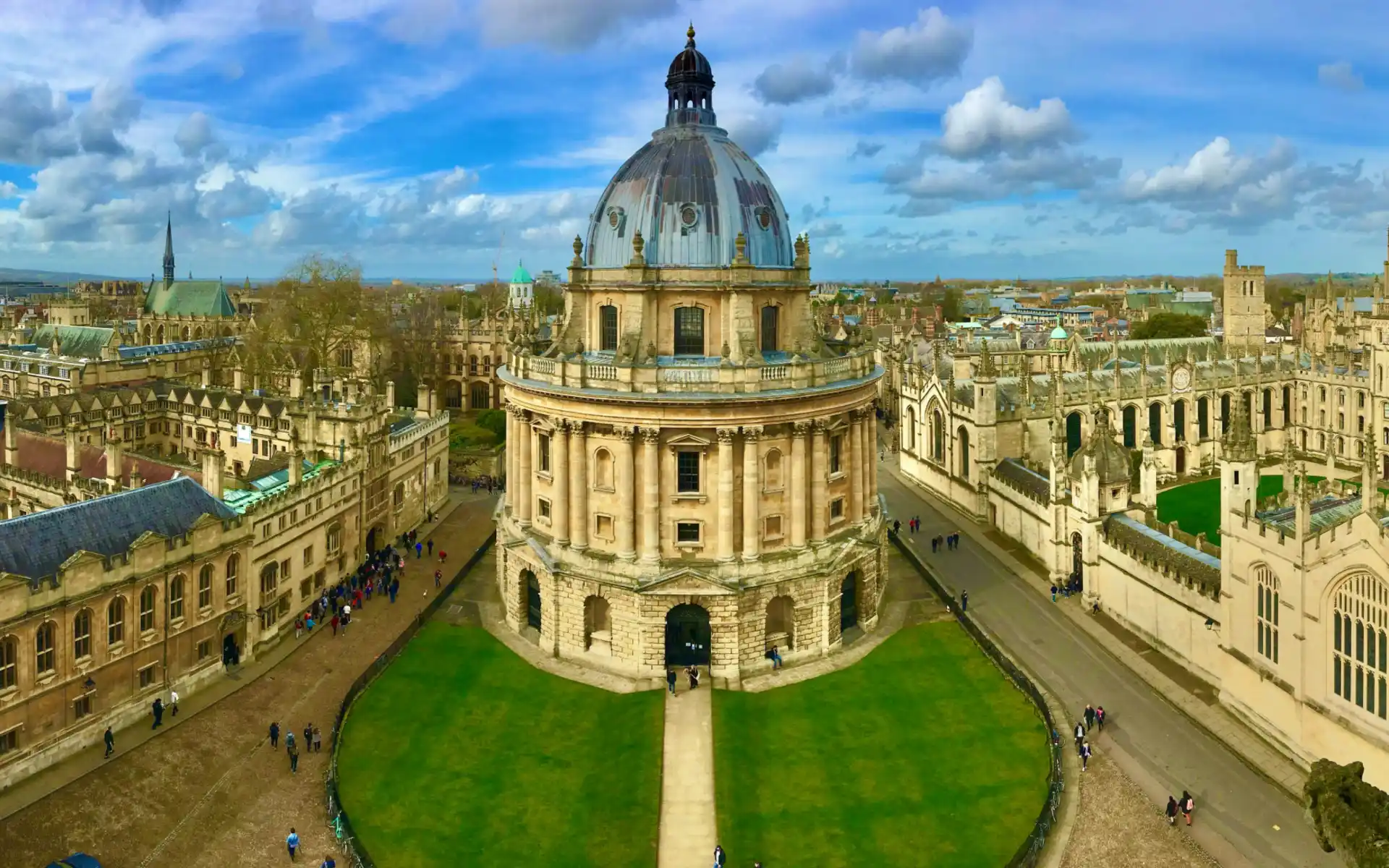
Both university cities are within easy reach and offer ancient college courtyards, punting on the river, and iconic architecture like Oxford's Bodleian Library and Cambridge's King's College Chapel.
- Cost: Free to explore (some colleges charge £5–10)
- Opening hours: College hours vary; typically 10am–4pm
- Ideal for: Architecture lovers, history buffs
- Area: Oxford (about 56 miles northwest) or Cambridge (about 50 miles north)
- Main attractions: Bodleian Library, King's College, punting
Read our full guide:
Enjoy London's diverse culinary scene
Indulge in a classic Sunday roast at a local pub
The main event of a traditional British roast dinner is beef, but ask a Brit and they may well tell you it’s all about the roasties—that’s roast potatoes, which are soft on the inside and crispy on the outside. These days, roasts can just as easily be chicken, pork, or vegetarian, but the sides are still likely to be focused on carrots, parsnips, gravy, and, of course, Yorkshire pudding (a baked, savory popover with a cake-like consistency). Save your appetite—you’re going to need it.
- Cost: £15–30 per person
- Opening hours: Sundays, typically noon–6pm
- Ideal for: Families, couples, friends
- Area: Citywide
Explore the city's vibrant street food markets
London's street food scene has exploded in recent years, with markets across the city serving everything from Venezuelan arepas to Japanese ramen. KERB operates several markets including King's Cross and Camden, while Maltby Street Market offers a more local alternative to Borough Market. For dinner options, try Pop Brixton or Boxpark in Shoreditch—converted shipping containers packed with global flavors.
- Cost: Dishes typically £8–15
- Opening hours: Varies by market (typically lunch through early evening)
- Ideal for: Foodies, friends, couples, solo travelers
- Area: Various locations across London
- Main attractions: KERB King's Cross, Maltby Street Market, Boxpark Shoreditch, Pop Brixton
Dine at a Michelin-starred restaurant
London boasts about 80 Michelin-starred restaurants, from traditional British fine dining to innovative global cuisine. Core by Clare Smyth, The Ledbury, and Dinner by Heston Blumenthal represent the pinnacle of London dining. For a more accessible introduction, try lunch menus at starred restaurants, which often offer significantly better value than dinner service.
- Cost: Tasting menus from £100–300+; lunch menus from £40–80
- Opening hours: Typically lunch and dinner service (closed Sundays/Mondays at many venues)
- Ideal for: Special occasions, couples, food enthusiasts
- Area: Mayfair has the highest concentration; also Chelsea, Notting Hill
- Main attractions: Core by Clare Smyth, The Ledbury, Dinner by Heston Blumenthal, Kitchen Table
Soak in the sweetness of an afternoon cream tea
Crustless sandwiches, scones with clotted cream and jam, little cakes, endless tea, and flutes of champagne if you’re fancy—cream tea is served. The proper time to indulge is 3–4pm, but you can book it for lunchtime and call it good, as there will be plenty of food. You can sometimes get gluten-free and vegan cream teas, too, but you’ll want to check ahead. To ensure you get your first choice, bookings are recommended at least a month in advance.
- Cost:
- The Ritz: Teas selected by the certified Tea Master (from £70)
- The Dorchester: Historic recipes steeped in tradition (from £110)
- The Langham: In the elegant surroundings of the Palm Court (from £75)
- Sketch: London’s pinkest restaurant (from £80)
- Fortnum & Mason: Served in the Diamond Jubilee Tea Salon (from £78)
- Opening hours: Typically 12pm–6pm sittings
- Ideal for: Special occasions, couples
- Area: Mayfair / West End
Experience London's nightlife and entertainment
Enjoy a night out in the lively Soho district

Soho is London's entertainment capital—bars, clubs, restaurants, and theaters in a compact maze of streets. Start with cocktails at Cahoots, or catch jazz at Ronnie Scott's.
- Cost: Cocktails £12–18; club entry varies
- Opening hours: Evening until late
- Ideal for: Friends, couples
- Area: Soho, Central London (W)
- Main attractions: Ronnie Scott's, Old Compton Street
Attend a concert at the O2 Arena
The O2 Arena is one of the world's busiest concert venues, hosting everyone from Beyoncé to the NBA. The dome complex also includes Up at The O2—a thrilling climb across the roof with spectacular views—plus restaurants, a cinema, and live entertainment. Located on the Greenwich Peninsula, it's easily accessible by Tube or the Emirates Air Line cable car for an extra special arrival.
- Cost: Up at The O2 from £35
- Ideal for: Music fans, groups of friends
- Area: Greenwich Peninsula, East London (SE)
- Main attractions: Arena concerts, Up at The O2 climb, Emirates Air Line views
Take a sunset cruise along the River Thames
Thanks to building density and relatively few hills, London is unfortunately lacking in good viewpoints, but seeing the city from the River Thames is a great opportunity to get some perspective. There are lots of guided tours available, but a surprisingly good option for a river cruise is the Thames Clipper (currently branded as Uber Boat). It’s technically a commuter service, stopping at 24 piers along the river, but the vessel has outside and inside seating, and it takes you past Big Ben, St. Paul’s Cathedral, and under Tower Bridge. It’s especially nice to get the Thames Clipper from central London to Greenwich, making the longer journey a scenic feature. You can also use it to hop between the two Tate galleries, as both are close to river piers.
- Cost: Thames Clipper from £5; dinner cruises from £70
- Opening hours: 6am–11pm
- Ideal for: Couples, families, photographers
- Area: River Thames (various piers)
- Main attractions: Big Ben, Tower Bridge, St Paul's views
Practical tips for visiting London
Navigate the city with ease using the London Underground and public transport
Get an Oyster card or use contactless payment for capped daily fares. The TfL Go app helps plan journeys with real-time updates.
Choose the best time to visit based on weather and events
Spring and early fall offer pleasant weather and manageable crowds. Winter brings Christmas markets and festive lights (and lots of crowds, especially in central London).
Find budget-friendly accommodation options in the city
London accommodation can be pricey, but deals exist if you know where to look. Consider staying in neighborhoods like King's Cross, Shoreditch, or South Bank for good value with easy Tube access to major attractions. Budget hotel chains like Premier Inn and Travelodge offer reliable, affordable rooms across the city, while hostels like Generator and Wombat's provide social atmospheres for solo travelers.
Booking well in advance, being flexible with dates, and traveling in shoulder season (spring or fall) all help reduce costs significantly.

Save on flights with Going
London is one of the most accessible cities for American travelers, with six airports—Heathrow, Gatwick, Stansted, Luton, City, and Southend—which means more opportunities to find incredible deals (though most international travelers will arrive at Heathrow or Gatwick).
Going Premium members receive real-time alerts when airlines drop prices on routes to London, often saving $300–500 or more on roundtrip fares. These deals don't last long, so having alerts sent directly to your inbox or phone ensures you never miss a price drop. If you are planning to go full-luxury, join Going Elite and receive business and first-class alerts, too.
For expert strategies, check out Going's guide on how to find cheap flights and browse the best cheap flight deals currently available. You can also use the breakdown of the cheapest airports to fly out of internationally to decide if driving a bit further saves you hundreds. And if you're open to carriers beyond the major airlines, the guide to budget international airlines shows which ones are worth booking.
Related reading:
- London Itinerary: 2, 3, and 5 Days
- London: The Big British Capital That's Actually Quite Small
- Where To Stay in London
- A Guide to One-Way Flights
*The original article, written by Jessica Furseth, has been modified to include additional valuable tips and recommendations for travelers.
Frequently asked questions
What are the top 3 most-visited attractions in London?
What is the best area to stay in London for tourists?
What is the minimum budget for a London trip?
Last updated December 16, 2025
Articles you might like
View All
Best Day Trips from San Francisco: 25 Trips You’ll Actually Want to Take (2026)
Jan 6, 2026
12 min read

30 Free Things To Do In San Francisco That People Keep Recommending
Jan 6, 2026
10 min read

Marrakesh: The North African City Where Storytelling Is an Art
Jan 5, 2026
5 min read


